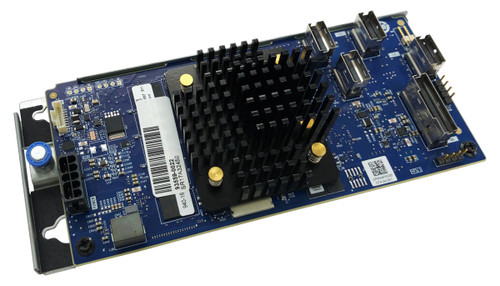
In today’s fast-paced digital landscape, IT hardware plays a crucial role in ensuring efficiency, security, and high-performance computing. Among the essential components in enterprise and personal computing environments, RAID Controller Cards stand out as key elements in data management and storage optimization. These cards not only enhance storage capacity but also improve data redundancy, making them indispensable for businesses that require high reliability.
Understanding RAID Controller Cards
A RAID Controller Card is a dedicated hardware component that manages multiple hard drives or solid-state drives (SSDs) configured in a RAID (Redundant Array of Independent Disks) setup. It enables improved data protection, faster read/write speeds, and better fault tolerance. Whether for enterprise-level data centers or small business servers, investing in the right RAID Controller Card can significantly boost overall system efficiency.
Benefits of Using RAID Controller Cards
-
Enhanced Data Protection – RAID configurations like RAID 1, RAID 5, and RAID 10 provide redundancy, ensuring that data remains intact even if a drive fails.
-
Improved System Performance – RAID 0 and RAID 10 configurations offer increased read and write speeds, making them ideal for high-performance applications.
-
Scalability and Flexibility – RAID Controller Cards allow businesses to scale storage capacities efficiently without compromising performance.
-
Hardware-Level RAID Processing – Unlike software RAID solutions, hardware RAID controllers free up CPU resources, leading to better overall system performance.
-
Support for Hot Swapping – Many RAID controllers support hot swapping, enabling drive replacement without shutting down the system.
How to Choose the Best RAID Controller Card
When selecting a RAID Controller Card, it is essential to consider various factors such as performance requirements, compatibility, and future scalability. Here are some key aspects to evaluate:
1. RAID Levels Supported
Different RAID controllers support different RAID levels. For instance:
-
RAID 0 (Striping) – Provides high-speed performance but lacks redundancy.
-
RAID 1 (Mirroring) – Ensures data redundancy but at the cost of storage capacity.
-
RAID 5 (Parity) – Balances performance and redundancy.
-
RAID 10 (Combination of RAID 1 & RAID 0) – Offers the best of both worlds.
2. Interface and Compatibility
Ensure that the RAID Controller Card is compatible with your system’s motherboard and storage interface, such as SATA, SAS, or NVMe. Choosing a PCIe-based RAID controller is recommended for high-speed applications.
3. Cache Memory and Battery Backup
Higher cache memory on a RAID controller improves data processing speeds. Additionally, a battery backup unit (BBU) helps preserve cached data in case of power failures.
4. Brand Reputation and Warranty
Brands like Dell, HP, LSI, and Adaptec offer reliable RAID Controller Cards with extended warranties and excellent customer support.
Setting Up a RAID Controller Card
Installing and configuring a RAID Controller Card is straightforward, but following the right steps ensures optimal performance.
1. Install the RAID Controller Card
-
Power off the system and insert the RAID Controller Card into the appropriate PCIe slot.
-
Secure it properly and reconnect any required cables.
2. Access the RAID Configuration Utility
-
During boot-up, enter the RAID BIOS or UEFI utility (usually by pressing a specific key like Ctrl+R or Ctrl+C).
-
Configure your RAID setup according to your needs (e.g., RAID 1 for redundancy or RAID 5 for balanced performance).
3. Initialize and Format Drives
-
Once the RAID array is configured, initialize and format the drives within the operating system to make them usable.
4. Install Drivers and Monitoring Software
-
Download and install the latest drivers for the RAID controller.
-
Use monitoring software to track drive health and performance metrics.
Common RAID Controller Issues and Troubleshooting
Even with high-quality RAID Controller Cards, users may encounter issues. Here are some common problems and solutions:
1. RAID Array Degraded or Failed
-
Solution: Replace the faulty drive immediately and allow the RAID controller to rebuild the array.
2. Slow RAID Performance
-
Solution: Ensure all drives are functioning optimally and check for firmware updates.
3. RAID Controller Not Recognized
-
Solution: Update BIOS/firmware, check PCIe slot compatibility, and ensure correct installation.
Conclusion: Optimizing IT Hardware with RAID Controller Cards
Investing in a high-quality RAID Controller Card is essential for businesses and professionals who rely on data-intensive applications. Whether you need better performance, enhanced data security, or scalability, a RAID controller can significantly improve your IT hardware infrastructure. By choosing the right RAID level, ensuring compatibility, and following best practices in setup and maintenance, you can maximize the efficiency and longevity of your storage systems.





Leave a Reply